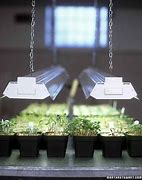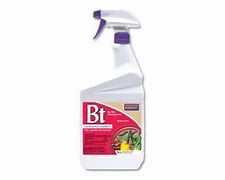Bolt: The condition of premature flowering in edible crops, often making the plant unpalatable. Bolting often happens when cool weather crops experience warmer summertime temperatures.
Cell Pack: A lightweight tray of molded fiber or, more often, plastic that is divided into many small sections like a muffin tin. Commonly used to hold potting mix for starting seedlings in a greenhouse or under lights indoors.
Companion Planting: Planting different plants together that benefit one another. For example, sowing a plant that attracts pollinators next to a plant that requires pollination.
Cover Crop: Fast growing plants, usually grains, legumes, or grasses that are utilized for one or more of their soil-enhancing qualities. These crops are usually worked into the soil or removed before they produce seed.
Days to Emerge: Number of days, on average, that it will take a seedling to emerge from the soil or medium in favorable conditions.
Days to Harvest: Number of days from sowing (or transplant) to harvest.
Determinant: Vegetables that grow to a certain height and then set their flowers and form fruit all at one time. Determinate plants tend to be smaller than indeterminates, will ripe earlier in the season, require little if any caging or staking, and will usually die by midsummer — freeing space for other crops.
Dibble: A wooden planting tool with a pointed end that makes a small planting hole for seeds, seedlings, or small bulbs.
Direct Sow: Sow seeds directly in their permanent growing space, as opposed to sowing seeds in trays or pots to grow indoors to develop survivable seedlings.
Disease Resistance: Exhibiting less susceptibility or an
immunity against specific diseases as compared to other varieties.
Disease Tolerance: Better ability to thrive with the stress of infection as compared to other varieties.
Drought Tolerant: Ability to survive or thrive in low water conditions. Also known as “water-wise."
Fairly Drought Tolerant: Ability to survive or thrive in low water conditions, but to a lesser extent than "drought tolerant" plants.
Frost Tolerant Crops: Crops that tolerate some cool weather and even frost, although the amount of tolerance varies between crops and even varieties.
Frost Sensitive Crops: Crops that are not frost tolerant and will die as a result of exposure to freezing temperatures.
Full Sun: Six or more hours of direct sunlight Germination: The moment when a seed begins to grow.
Grow Lights: Full-spectrum fluorescent lights that can be positioned directly above seeds and raised as seedlings grow. Grow lights not only provide the light required for healthy development, but they also warm the soil, speeding germination.

HARDENING OFF: The 7 to 10-day process of acclimating
plants started indoors to outdoor conditions.Hardening Off:
The process of gradually exposing young plants to outdoor conditions so that they are well adapted by the time they are finally planted in the ground.
Hardiness: The degree to which a plant can withstand cold temperatures. Botanical Interests uses "hardiness" to also indicate the lifespan of a plant, e.g. annual, biennial, or perennial.
Hardiness Zone: Hardiness zones were developed by the United States Department of Agriculture (USDA) to determine the plants that grow best in the climate where you live. Each zone represents the region's minimum average winter temperatures. DuPont is in hardiness zone 8b.
Heat Tolerance: The ability to resist heat-triggered issues like poor pollination, bitterness, premature flowering, and lack of fruit-set.
Heirloom: Vegetables which are open-pollinated plants that have been cultivated for at least 50 years. They are often more flavorful, colorful, and interesting than hybrids, but they may be challenging to grow if your soil is disease-prone.
Hybrid: Modern F1 (filial 1) type hybrid. Two specific parent varieties are bred to achieve a first generation hybrid offspring. F1 hybrids are not open-pollinated. Traditionally, "hybrid" indicates any variety that had been made by cross- pollinating, whether that was completed by hand or an insect.
Indeterminate: Crop plants that continue to grow and fruit throughout the growing season. They tend to fruit later in the season and should produce fruit until late in the season. The continuing growth requires support such as cages, trellises or staking.
NPK: Scientific shorthand for nitrogen, phosphorus, and potassium, the three nutrients used in greatest quantity by plants. The three-number formula (5-10-5, 20-20-20) on fertilizer labels identifies a product's NPK content.
Organic: Term used by gardeners to distinguish those sorts of soil amendments, fertilizers, and pesticides that derive from unprocessed natural products, as opposed to products chemically synthesized in a factory. Examples of organic products include manures, rock phosphate, and Neem oil. Synthetics include ammonium nitrate, superphosphate, and malathion.
Organic Seed: Describes seeds grown on certified organic property, following strict USDA guidelines regarding soil quality, pest and weed control, and the use of additives like fertilizers.
Part Sun/Part Shade: 3 to 6 hours of sunlight per day.
Parthenocarpic: The attribute of a variety producing fruit without fertilization. Cultivars produce seedless fruits when flowers are unpollinated, making them ideal for greenhouse production where pollinators may be excluded. When pollinated, these types produce seeded fruit.
Perennials: Varieties that live for two or more years.
pH Content: A measure of acidity or alkalinity; in gardening, usually applied to soils. A soil's pH may range from 0 to 14, with a pH below 7 indicating acidity, and a pH above 7 indicating alkalinity. Some plants require a lower pH level in order to effectively absorb nutrients from the soil. The best ways to lower pH organically is through well-decomposed compost. Coffee grounds may also help.
Planting Guide: A detailed plan that lists what is planted in each bed so that proper crop rotation can be maintained from year to year.
Plant Out: To transplant from a container, or from indoors, into the garden.
Pollination: The fertilization of a flower by wind, insect, birds, etc. where the male pollen reaches the female stigma, resulting in a seed. Many of our “vegetables” are the edible fruit that surrounds the developing seeds.
Second Sowing: A second planting of vegetables in mid- to late-season.
Successive Sowing: Sowing at least once more after the initial sowing, which extends the harvest. Three ways to successive sow: 1. Staggering sowings of the same crop 2. Sowing two varieties of the same crop with different maturing dates 3. Replacing one finished crop with a different crop.
Thin: To pull out or cut off crowded seedlings so those remaining have adequate room for vigorous growth. In pruning, thinning involves the removal of stems and branches from a congested plant to enable more light and air to penetrate into the interior


